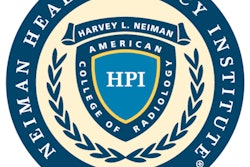A coding platform developed by the Harvey L. Neiman Health Policy Institute can identify the subspecialties of radiologists based on claims submissions, potentially paving the way for quality metrics geared specifically for individual subspecialties, according to a study published online March 16 in the American Journal of Roentgenology.
The Neiman research team led by Dr. Andrew Rosenkrantz of NYU Langone Medical Center used its open-source Neiman Imaging Types of Service (NITOS) platform to classify more than 1,800 academic radiologists in the U.S. based on analysis of imaging claims data. The mapping algorithm was able to correctly classify the subspecialty of 90% of the academic radiologists, according to the group.
"If this concept could be validated more broadly, it would permit the development of subspecialty-focused quality metrics, thus broadening opportunities for radiologist subspecialty work to be appropriately acknowledged in future payment models," said senior author Dr. Richard Duszak Jr. from Emory University in a Neiman statement.
NITOS was designed to allow users to extract utilization and cost data to examine the role and value of medical imaging. The tool classifies all Healthcare Common Procedure Coding System (HCPCS) codes for noninvasive diagnostic imaging professional services, according to the institute. These codes are then mapped to an imaging modality, body region, and, when relevant, a specialty area of focus.
After identifying 33,118 self-designated radiologists via Medicare public use files, the researchers performed a manual search to further identify 1,860 of those working at the top 20 academic radiology departments funded by the U.S. National Institutes of Health. The software was then used to map the Medicare claims for those radiologists.
Next, the researchers compared the mapping results with the radiologists' self-designated subspecialty area on their department websites. The classification system produced an overall 90% accuracy rate; 6% had practice patterns sufficiently mixed that they could not be discretely classified, and 4% were incorrectly classified, according to the group.
Rosenkrantz noted that emerging payment models are designed to more tightly link payment to quality metrics. However, the quality metrics developed by the U.S. Centers for Medicare and Medicaid Services (CMS) have drawn criticism, particularly for how they apply to radiologists, he said.
Under the Medicare Access and CHIP Reauthorization Act, CMS has created quality measures for specialties as well as subspecialties -- physicians can report any six measures for their specialty or subspecialty. However, CMS provider codes currently only differentiate diagnostic radiologists in a generic manner from nuclear medicine physicians and interventional radiologists. Metrics meaningful to different subspecialty diagnostic radiologists may be vastly different, according to the institute.
Responding to those concerns, CMS has indicated its intent to partner with specialty societies to develop expanded sets of subspecialty measures, according to the institute. The researchers noted that the classification system -- if validated through further work -- would allow radiologists to receive quality scores based on metrics most relevant to their unique practices. This would also help align new value-based payment models with the reality of subspecialty radiology care, the institute said.



















